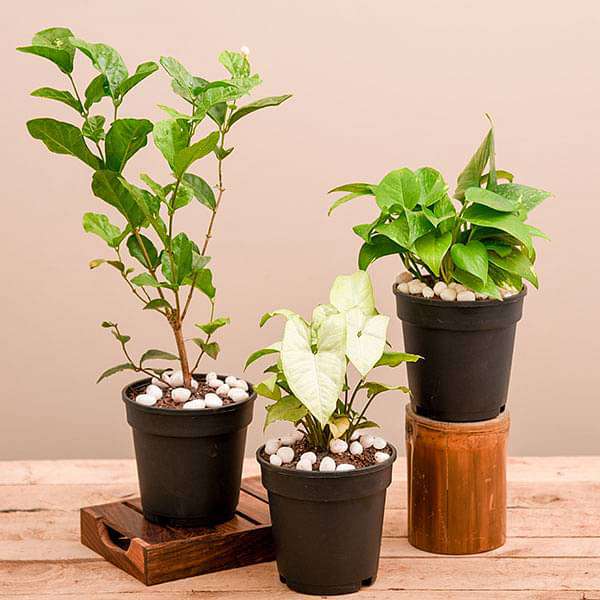Tulsi or holy basil is an incredible herb revered in Hindu Indian mythology for its medicinal and spiritual characteristics.
Tulsi is a medicinal herb native to India. Its spicy, refreshing fragrance and tiny colorful flowers makes this a useful houseplant.
Other Names of Tulsi — Ajaka, Albahaca Santa, Bai Gkaprow, Baranda, Basilic Indien, Basilic Sacré, Basilic Sacré Pourpre, Basilic Saint, Brinda, Green Holy Basil, Hot Basil, Indian Basil, Kala Tulsi, Kemangen, Krishna Tulasi, Tulsa, Manjari, Ocimum sanctum, Ocimum tenuiflorum, Parnasa, Patrapuspha, Red Holy Basil, Sacred Basil, Sacred Purple Basil, Shyama Tulsi, Sri Tulasi, Suvasa Tulasi and Tulsi Patra.
There are more than 100 different varieties but the most known and used are three:
Rama Tulsi
Rama Tulsi or Bright tulsi is a broader leaf variety and can be found in parts of China, Nepal, India and southern South America. It is used to promote healthy digestion and has a milder flavor than other tulsis but more stronger scent when the leaves are crushed.
Krishna Tulsi
Krishna Tulsi or purple leaf Tulsi grows in many parts of India, but this dark purple variety is harder to find than the greener. It is especially useful for curing respiratory infections, ear infections and skin problems. It grows slower than other varieties, which may contribute to its spicy, pungent flavor and odor. Purple leaf basil is also less bitter and astringent than other tulsi varieties.
Vana Tulsi
Vana Tulsi Tulsi or Wild forest holy basil is the most difficult variety to find, it grows around the foothills of the Himalayas. It is the tastiest and beneficial in all the tulsis. It has light green upper leaves and dark green lower leaves.
Propagation and Planting
Sow seeds outdoors or indoors in a greenhouse or on a sunny windowsill.
Place the tulsi seeds on top of the potting mix and tamp them for good soil to seed contact, cover the seeds with 1/4 inch layer of potting mix. Water the seeds with sprayer and place them where they receive part morning sun. Keep the soil constantly moist until the germination, which will take around 1-2 weeks.
When the seedlings have grown two or three sets of true leaves carefully transplant them in individual containers or outdoors, taking care not to disturb the roots.
Requirements of growing tulsi
Soil
Tulsi grows well in fertile soil with good drainage, pH level around 6 to 7.5 is optimal. We recommend using MahaGro Organic Potting Mix.
Sun
Tulsi thrives in full sun but grows in partial shade too, at least four hours of sunlight a day is required.
Watering
Water the plant when top one inch of soil is dry. Do not water during rain. Reduce watering in the winter to prevent diseases.
Tulsi Plant Care
It is important to pinch tops of Tulsi plant when they are forming four or six pairs of leaves, this will make the plant grow bushier. Even the flower buds need to be removed when they appear. It grows more lush and full when seed production is prevented.
It is also important to remove the faded, wilted or discolored leaves to encourage the growth of new foliage. Regular removal of old leaves and flower buds keep the plant healthy.
Fertilizer
If you are using MahaGro Organic Potting Mix there is no need to add fertilizer because it already has a potent slow release fertilizer. Otherwise apply balanced fertilizer once in every couple of weeks. Replacing top two inch layer of soil with potting mix every year or in six months is also beneficial.
Pruning
Prune Tulsi as needed throughout the year to control its size and promote bushier and more compact growth. Remove no more than half of the growth of stem while pruning.
Pests and Diseases
It is generally pests and diseases free. However, when grown in poor conditions it might be attacked by some common pests like mealy bugs, aphids, spider mites and sometimes whiteflies. For treating pests use organic pesticide.
How to Harvest Tulsi
Reap the aromatic leaves of your Tulsi plant throughout the growing season. Once your plant reaches 12 inches in height, take a pair of scissors and depending on your needs, cut large single leaf or cut whole branch.
Use fresh leaves on the same day you harvest because they fade quickly.
Store your Tulsi harvest for future use by drying out the leaves. Collect branches in a basket and place them on a dry place away from sunlight and toss the stem 2-3 times every day until leaves becomes crispy and collapses when you crush.
Tulsi Benefits
Tulsi has antioxidant, antibacterial, antiviral, immune-stimulating and adaptogenic (stress removal) properties. It supports body’s natural defenses against germs, stress and disorders of various kinds.








Reviews
There are no reviews yet.